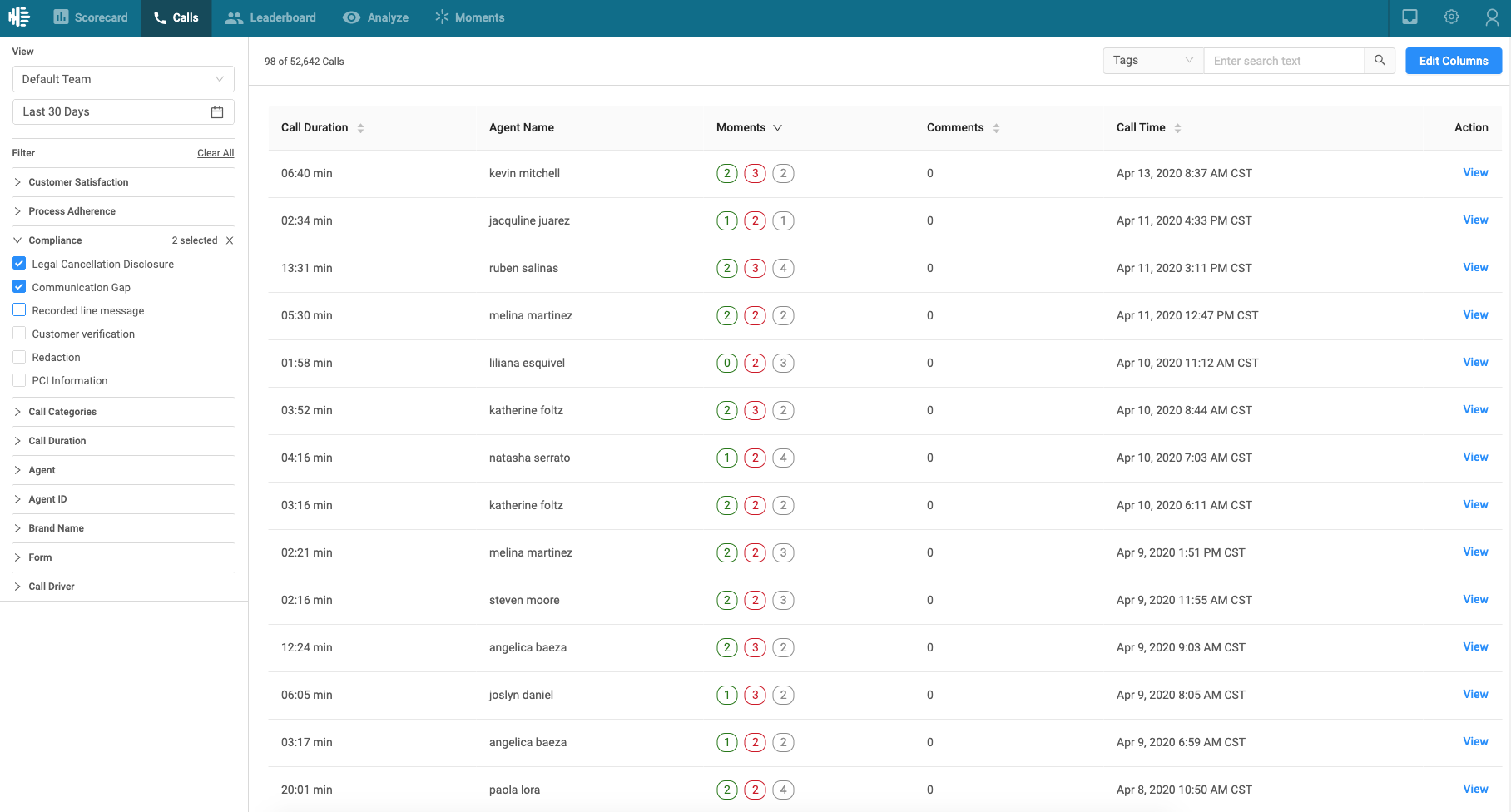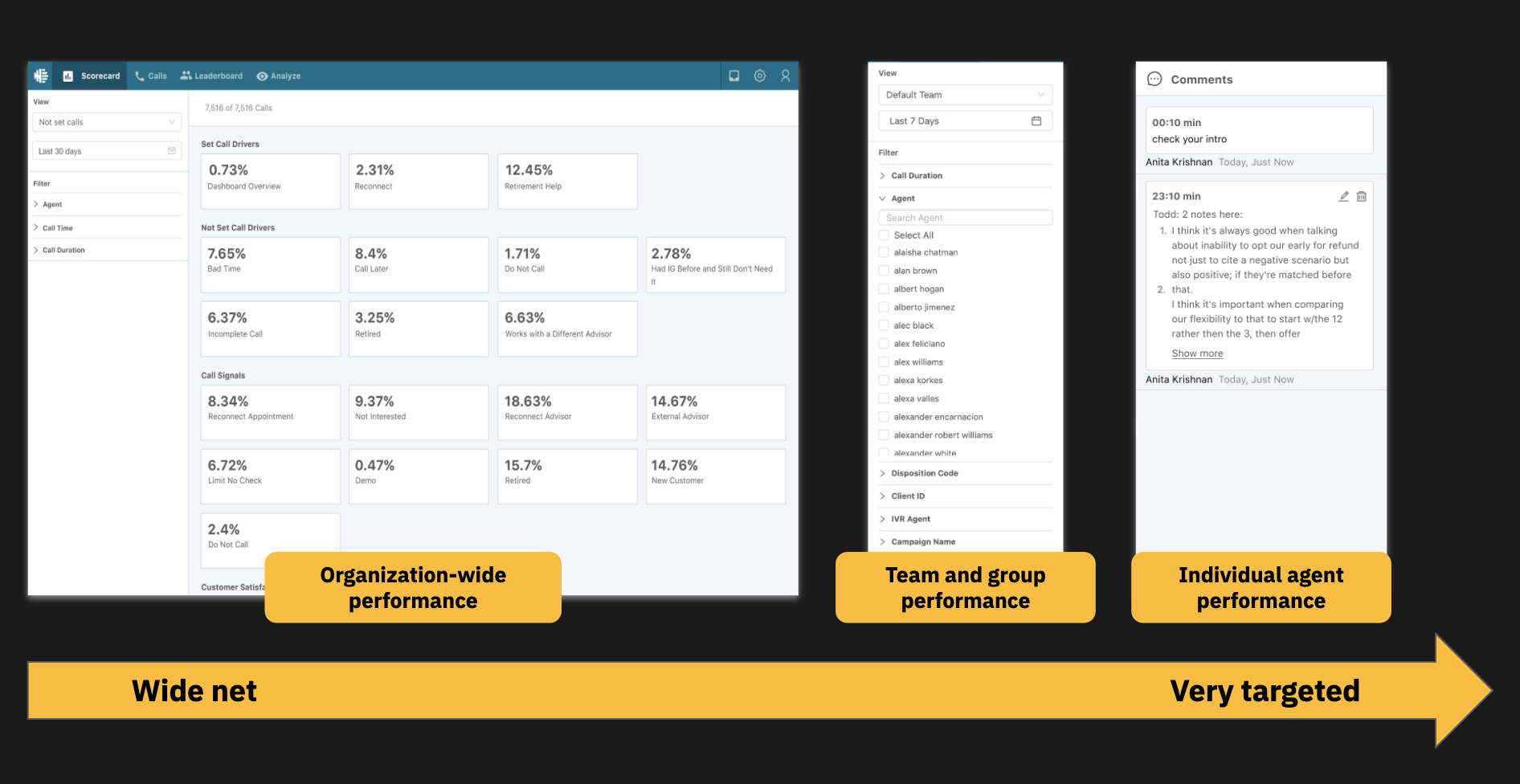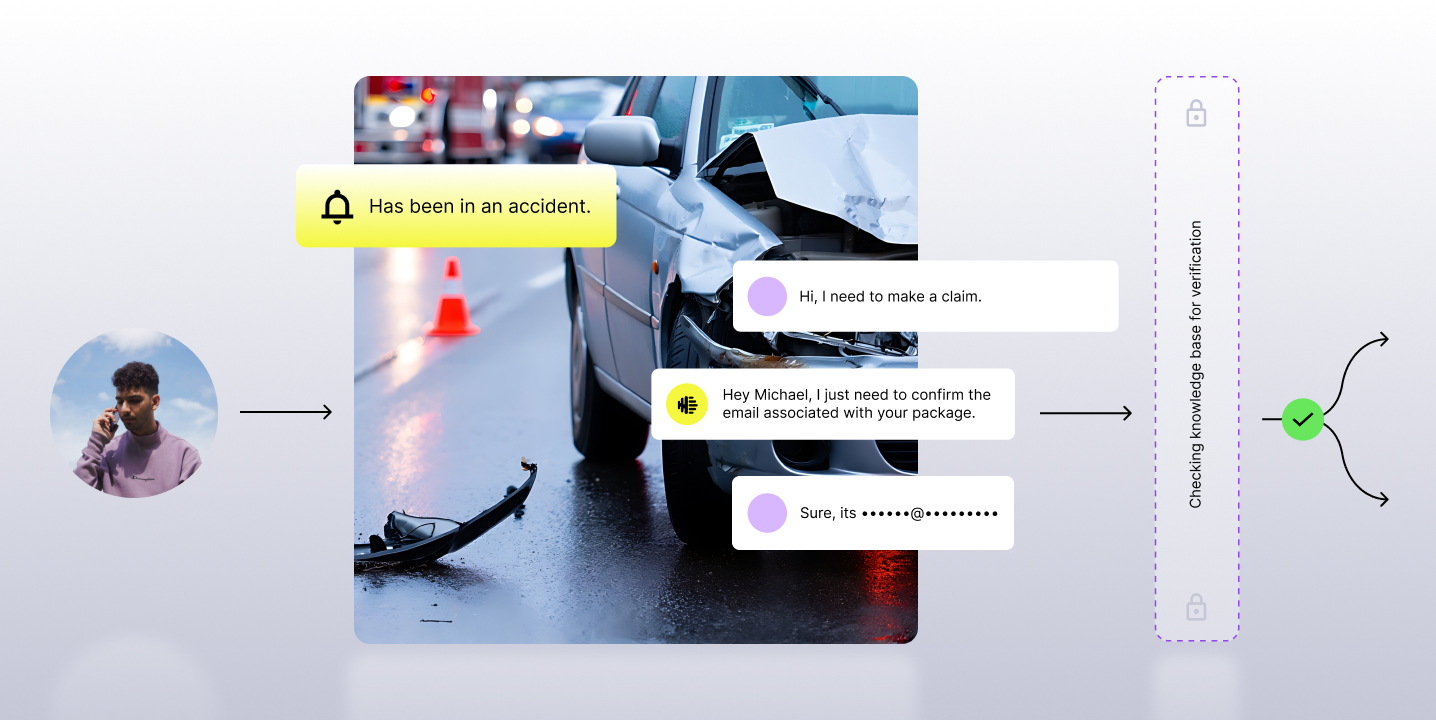Quality assurance is a driving force in recovery/collection floors and outsourcing organizations. QA acts as a conduit for monitoring and ensuring call center compliance - making sure client, state, and federal requirements are adhered to, and mitigating the risk of a potential compliance breach.
However, QA teams historically only listened to 1-2% of agent calls. They’d look to get lucky and catch risks that could be addressed with operations or training. But they’d know ultimately they weren’t catching everything.

Although voice technology like speech analytics and contact center AI don’t allow you to prevent an agent from saying the wrong thing or violating a compliance guideline, what it does do is empower you to catch those compliance gaps in real-time, on 100% of calls. Compliance teams can now mitigate gaps in compliance immediately, rather than days or weeks after.
And armed with new insights on compliance, quality teams can work more closely with compliance to prevent issues before they happen or spiral out of control.
As a result, QA and compliance in the call center have gone from reactive to proactive.

The Old Way of Monitoring for Compliance in the Call Center Doesn’t Work
Before technologies like speech analytics and AI were available, quality and compliance teams would spend their days listening to, rewinding, and fast-forwarding calls. While doing so they’d fill out a lengthy form or checklist for each call that included dozens or even upwards of 100 items. It’d take forever, and they’d only touch a fraction of the total calls. Those call findings would then be sent off to operations and compliance to be addressed.

But roles like quality analysts and compliance managers have dramatically evolved.
“I don’t foresee us having QAs who just sit and listen to calls. Maybe they listen to a couple and give more pointed feedback. But it’s no longer one by one by one and hoping to stumble across and issue they can address,” says Jason Davis, Chief Compliance Officer at ERC BPO.
These teams are now looking at agent performance and teams more holistically to identify micro or macrotrends that will influence compliance interactions and quality metrics. They can now address multiple agents and multiple teams simultaneously by targeting areas of opportunity and training small groups. They can know with data whether a coaching opportunity really exists, or if an agent just made a simple mistake.
Rather than looking and hoping to catch a gap in compliance, the quality process has now become much more proactive. In turn, this has changed the way quality and compliance teams operate leading to more collaboration and, in some cases, a merging between the two.
Structuring QA for Compliance in the Call Center

In the past, everything that happened from a quality standpoint was driven by legal and compliance. Regulatory teams would identify a requirement or roll out a new process to agents. Or maybe a new requirement would from come clients, or be driven by new laws. Operations and QA would then take that order from compliance and legal; build and design QA forms to understand what was happening on calls, and manually monitor for any gaps in compliance.
What we’re seeing today is that this relationship is not a one-way street anymore, but a two-way conversation between quality and compliance/legal. Requirements and process changes are not being driven by compliance and legal alone, but by quality teams who have become “compliance specialists” in their own right. With new tools to know what’s happening on 100% of calls, quality analysts are empowered to bring new ideas and find ways to identify and mitigate possible process improvements or risks to the business.

QA analysts who used to spend their entire day on the phone listening to calls are now proactively recommending changes, and even coaching agents on how to improve. They also bubble up trends to see if compliance gaps are happening elsewhere across the organization. They act as investigators and researchers helping operators know how often issues arise on calls via keyword monitoring. All of this ultimately allows organizations to get out in front of compliance gaps before they happen.
Agent Compliance Coaching Goes Small-Group and Agile
The transformation goes beyond the role of quality analyst and has also changed how agents are coached on compliance. With low call coverage, one-size-fits-all training programs were once the norm. The question most Contact Centers asked was: How can we train as many agents as possible on our most important compliance topics?

Now, with deep compliance insights from 100% of calls, quality analysts can help drive custom-tailored training, down to the individual agent who needs coaching. By using AI to automatically monitor a number of different compliance interactions, including things like mandatory compliance dialogues, customer verification, mini Mirandas, and more - agents who dip below a certain threshold can be quickly identified and re-trained.
“Supervisors and quality analysts are able to use the system, querying certain keywords, pull up reports on specific agents and pinpoint areas of opportunity. One of the really cool things I hear over and over again from different team supervisors is they can address a couple things in the morning, and by noon they know if their team members took what they were coached on and have applied it,” says Davis.
A Smarter, Faster, Better Way to Do QA
Yet the real transformation is in the people themselves - particularly the QAs. Their roles are changing, and every day that are empowered to do more work that’s closer to the pulse of the business. Ultimately, this enables a smarter, faster, and better way to do QA that benefits agents and customers.
About the Author
Joe Hanson leads content marketing at Observe.AI. Want to guest blog? Or maybe you have some expertise you want to share? Connect with him on LinkedIn.

.png)














